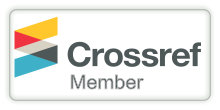SUSTAINABLE NARRATIVES: REVIVING INDIAN DOLL CRAFTS IN THE AGE OF SLOW FASHION
DOI:
https://doi.org/10.29121/shodhkosh.v6.i1.2025.4512Keywords:
Indian Doll Crafts, Slow Fashion, Sustainability, Cultural Preservation, Artisan Communities, Ethical ConsumerismAbstract [English]
This research investigates the revival of Indian traditional doll crafts within the global slow fashion movement context. It evaluates the potential of these crafts as sustainable economic activities, emphasizing cultural preservation, ecological responsibility, and community empowerment. Employing both qualitative and quantitative methodologies, this paper explores artisan economics, market trends, consumer preferences, and sustainable impacts. The research highlights opportunities and challenges faced by artisans, offering insights to policymakers, industry stakeholders, and academia.
References
Clark, H. (2008). Fashion Theory. Fletcher, K. (2010).
Fashion Practice. Suhud, U., Allan, M., Wiratama, B., & Maulida, E. (2020)
Research in World Economy. Gupta, S., Gwozdz, W., & Gentry, J. (2019)
Journal of Macromarketing. Brown, S., & Vacca, F. (2022) Sustainability: Science, Practice, and Policy.
Singh, N., & Jain, S. (2015). Indian Handicrafts in the Age of Globalization. International Journal of Humanities and Social Science Invention, 4(6), 20-26.
Bhowmik, S., & Chakrabarti, P. (2018). Traditional Handicrafts in India: An Analysis of Marketing Issues and Challenges. Journal of Business Management & Social Sciences Research, 7(1), 67-74.
Sharma, R., & Sharma, A. (2020). Impact of Fast Fashion on Indian Artisan Communities. Journal of Textile Science and Fashion Technology, 6(2), 97-102.
Mohanraj, P., & Ravi, S. (2020). Challenges faced by Artisans in India: A Study of Traditional Handicrafts. Indian Journal of Economics and Development, 16(3), 369-374.
Clark, H. (2008). SLOW+ FASHION—an Oxymoron—or a Promise for the future? Fashion Theory, 12(4), 427-446. DOI: https://doi.org/10.2752/175174108X346922
Fletcher, K. (2010). Slow Fashion: An Invitation for Systems Change. Fashion Practice, 2(2), 259–265. DOI: https://doi.org/10.2752/175693810X12774625387594
Brown, S., & Vacca, F. (2022). Cultural sustainability in fashion: Reflections on craft and sustainable development models. Sustainability: Science, Practice, and Policy, 18(1), 590–600. DOI: https://doi.org/10.1080/15487733.2022.2100102
Carrigan, M., Moraes, C., & McEachern, M. (2013). From conspicuous to considered fashion: A harm-chain approach to the responsibilities of luxury-fashion businesses. Journal of Marketing Management, 29(11-12), 1277-1307. DOI: https://doi.org/10.1080/0267257X.2013.798675
Dissanayake, G., & Sinha, P. (2015). Sustainable fashion in a circular economy. Sustainability, 7(9), 12336-12357.
Ertekin, Z. O., & Atik, D. (2015). Sustainable markets: Motivating factors, barriers, and remedies for mobilization of slow fashion. Journal of Macromarketing, 35(1), 53-69. DOI: https://doi.org/10.1177/0276146714535932
Jung, S., & Jin, B. (2014). A theoretical investigation of slow fashion: Sustainable future of the apparel industry. International Journal of Consumer Studies, 38(5), 510-519. DOI: https://doi.org/10.1111/ijcs.12127
Niinimäki, K., & Hassi, L. (2011). Emerging design strategies in sustainable production and consumption of textiles and clothing. Journal of Cleaner Production, 19(16), 1876-1883. DOI: https://doi.org/10.1016/j.jclepro.2011.04.020
Park, H. J., & Lin, L. M. (2018). Exploring attitude-behavior gap in sustainable consumption: Comparison of recycled and upcycled fashion products. Journal of Business Research, 117, 623-631. DOI: https://doi.org/10.1016/j.jbusres.2018.08.025
Scrase, T. (2020). Crafting sustainability: Artisanal craft, poverty reduction, and cultural survival. Journal of Sustainable Development, 13(2), 45-56.
Downloads
Published
How to Cite
Issue
Section
License
Copyright (c) 2025 Salam Manisana Singh

This work is licensed under a Creative Commons Attribution 4.0 International License.
With the licence CC-BY, authors retain the copyright, allowing anyone to download, reuse, re-print, modify, distribute, and/or copy their contribution. The work must be properly attributed to its author.
It is not necessary to ask for further permission from the author or journal board.
This journal provides immediate open access to its content on the principle that making research freely available to the public supports a greater global exchange of knowledge.































